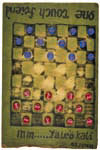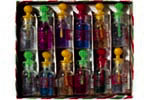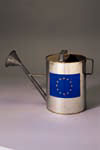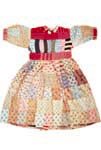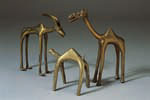 |
|
Transformations: home
Introduction
Virtual exhibition
Book
Education
Artists list
Events
Sponsors
The sound of recycling
Recycled images
Virtual Exhibition: Section One 25 March 2000 - 8 September2002
Recycling and Form
The process of recycling usually involves some change of form. This ranges from objects that reuse the shape of a previous object with very little modification through to pieces that have been melted down and completely reshaped.
The simplest type of recycling is that in which an object is put to a new use with little or no modification of its form. This is a way of reusing objects that we are familiar with in our daily lives. We have all at one time used a book as a doorstop or folded an old envelope to stop a table rocking . Occasionally, this reuse may strike us as inspired, as in the draughts set made in Tanzania in 1993, where bottle tops have been used as pieces. This was not just the creative replacement of a missing piece, but the adoption of an ever-available material as a permanent source from which to replace anything that might get lost.
The use of First World War shell-cases to make flower-vases are particularly moving examples of the reuse of existing forms with minimal change to create a new object. Many contemporary artists and designers have also explored this type of recycling, as in the table made from a trawler's dredger by Dan Harding.
Many objects in the display use parts of previously larger objects in their new life. In some cases objects are seen as sources of material for making something else, rather than as potential recyclable forms and shapes in their own right. The process of cutting down fabric and sewing parts together as in patchwork is a strong visual image of this form of re-use.
The most radical change of form takes place in objects that have been made from 'melted' down objects. It is often impossible to tell just from looking at the newly formed object that it has been made from recycled material. Occasionally, however, traces of parent material may be evident, as in the flecks of colour from 'parent' plastic bottles that can be seen in the chair designed by Jane Atfield.
This 'meltdown' form of recycling has a long history in glass and metal production. Many cross-cultural parallels emerge; for example, intense blue glassware made from melted-down window glass by British artist Emma O'Dare can be seen alongside African bangles made from melted-down coloured glass bottles in the 1930s.
